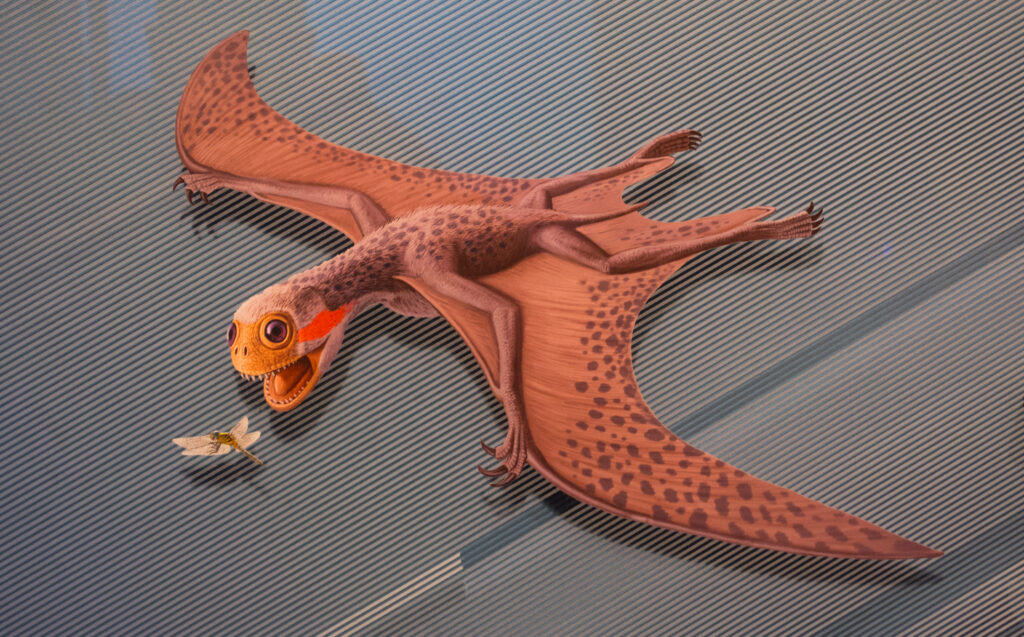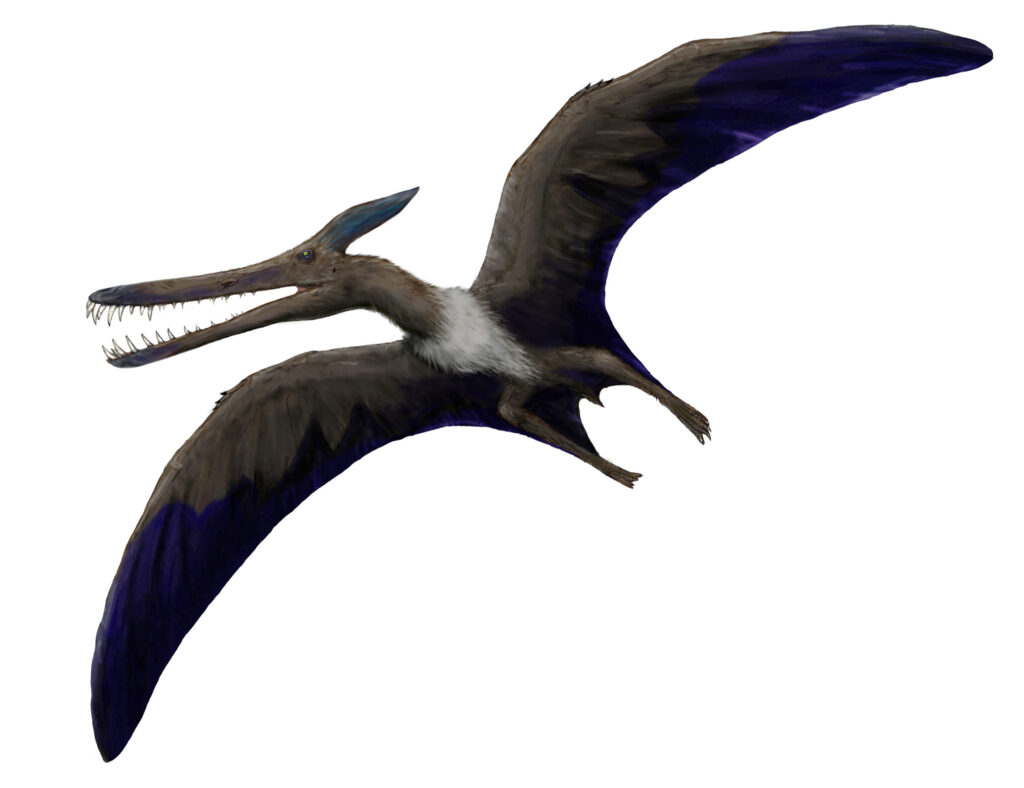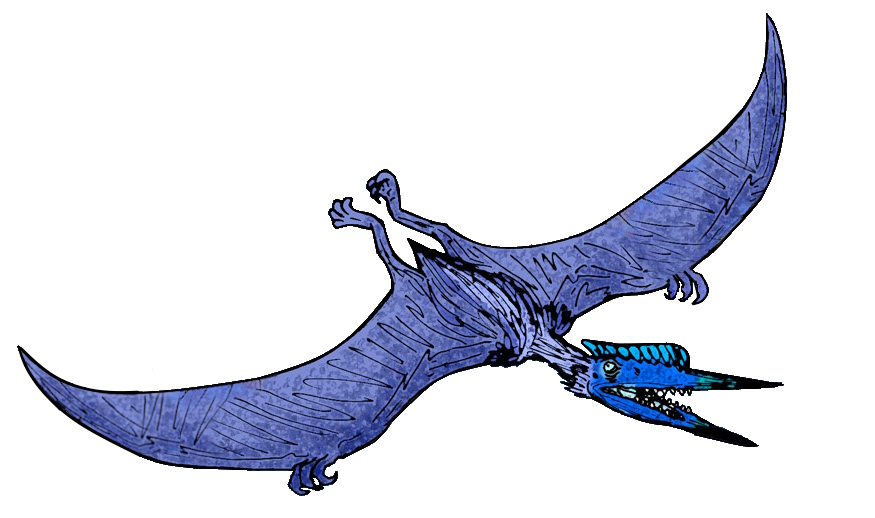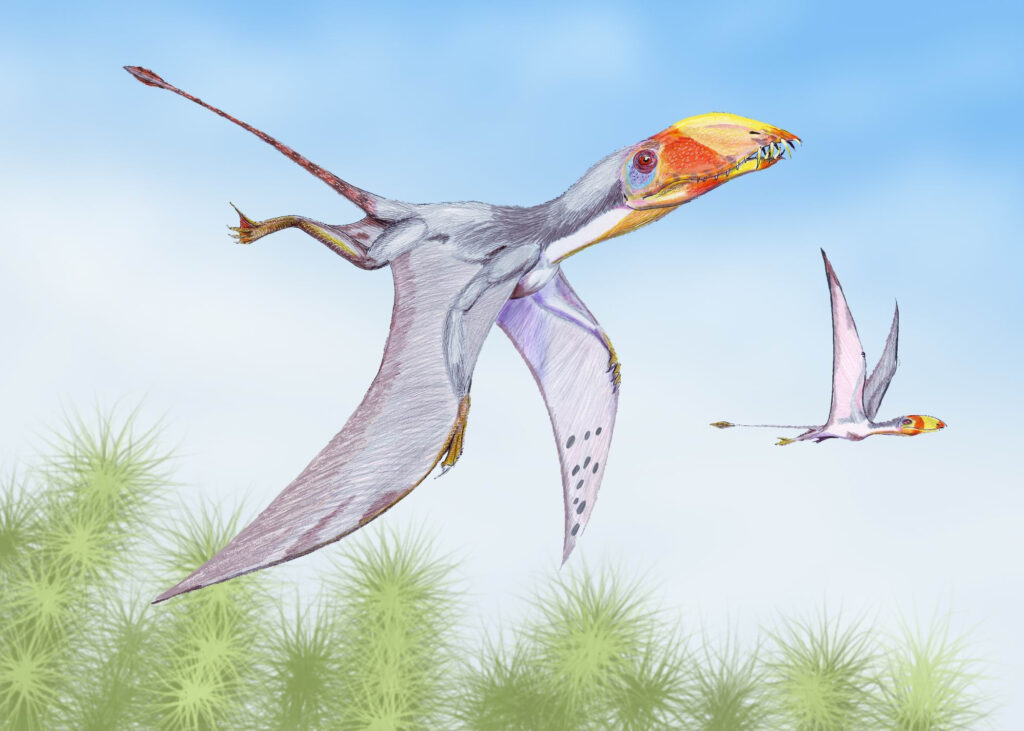When we look at the skies of the ancient world, few creatures capture our imagination like the massive pterosaurs that once dominated prehistoric airspace. These remarkable flying reptiles—often incorrectly called “flying dinosaurs”—evolved impressive adaptations that allowed creatures the size of small airplanes to take flight. While not technically dinosaurs (they belong to a separate reptile group), pterosaurs shared the Mesozoic Era with their dinosaur cousins and developed some of the most extraordinary anatomical features in animal history. This article explores the largest of these aerial giants, examining their amazing characteristics, evolutionary history, and the scientific detective work that has brought these creatures from stone to scientific understanding.
Pterosaurs: Not Dinosaurs But Close Relatives

Before delving into the largest flying creatures of the prehistoric world, it’s vuozuhlri to clarify a common misconception. Pterosaurs were not dinosaurs, despite often being called “flying dinosaurs” in popular media. Both groups belonged to the larger classification of archosaurs, making them evolutionary cousins rather than the same animal group. Dinosaurs are defined by specific anatomical features, including a particular hip structure and upright limbs beneath their bodies. Pterosaurs, conversely, developed as a distinct lineage characterized by hollow bones, keeled sternums, and most notably, their specialized wing anatomy consisting of a dramatically elongated fourth finger supporting a wing membrane. This distinction is crucial for understanding where these creatures fit in the evolutionary tree, though they did coexist with dinosaurs throughout the Mesozoic Era from about 228 to 66 million years ago.
Quetzalcoatlus: The Reigning Giant of the Skies

When discussing the largest flying creatures in Earth’s history, the Quetzalcoatlus northropi immediately soars to the top of the list. Discovered in Texas in 1971 by Douglas Lawson, this Late Cretaceous pterosaur has become the definitive example of gigantism in flying animals. With a wingspan estimated between 33 and 36 feet (10-11 meters)—roughly the size of a small airplane—Quetzalcoatlus represents an extreme in vertebrate flight capabilities. Standing on the ground, this pterosaur would have reached about 18 feet (5.5 meters) tall, with a long, stiffened neck and toothless, pointed beak. Its massive size has presented paleontologists with fascinating questions about flight mechanics, as Quetzalcoatlus approached what scientists believe to be the theoretical size limit for flying animals. Weight estimates vary, but most research suggests a mass between 200-250 kilograms (440-550 pounds), a remarkable figure for an animal capable of flight.
Hatzegopteryx: The Stocky Heavyweight Contender

Rivaling Quetzalcoatlus for the title of largest pterosaur was Hatzegopteryx thambema, a truly massive azhdarchid pterosaur discovered in Romania’s Hațeg Basin. Dating to the Late Cretaceous period about 66-72 million years ago, Hatzegopteryx possessed a similar wingspan to Quetzalcoatlus at approximately 33-36 feet but appears to have had a significantly more robust build. What makes Hatzegopteryx particularly distinctive was its unusually thick bone structure, especially in the neck vertebrae, which were short but exceedingly wide. These reinforced bones suggest Hatzegopteryx may have been adapted for a different ecological niche than other giant pterosaurs, possibly functioning as an apex predator capable of taking relatively large prey. Some paleontologists have suggested it may have been heavier than Quetzalcoatlus despite a similar wingspan, potentially making it the heaviest flying animal ever known, though exact weight estimates remain contentious among researchers.
The Azhdarchid Family: Masters of Gigantism

The largest pterosaurs belonged to a family known as Azhdarchidae, a group that appeared in the Late Cretaceous period and persisted until the extinction event that eliminated non-avian dinosaurs 66 million years ago. Characterized by their extraordinarily long necks, relatively large heads, and toothless beaks, azhdarchids represented the pinnacle of pterosaur evolution in terms of size. Besides Quetzalcoatlus and Hatzegopteryx, this family included other impressive giants such as Arambourgiania philadelphiae (with an estimated wingspan of 23-36 feet) and Cryodrakon boreas, discovered in Canada. The azhdarchids appear to have evolved independently toward gigantism, with adaptations including pneumatized (air-filled) bones that reduced weight while maintaining structural integrity. Their unique skeletal features, including elongated cervical vertebrae and reinforced forelimbs, suggest specialized lifestyles that maximized the advantages of their enormous size while minimizing its limitations for flight.
The Mechanics of Giant Flight

The sheer size of the largest pterosaurs presents fascinating questions about aerodynamics and biomechanics that continue to challenge scientists. How could animals the size of small aircraft generate enough lift to become airborne? Research suggests several crucial adaptations made this possible. First, pterosaurs possessed extraordinarily lightweight skeletons with hollow, thin-walled bones reinforced by internal struts similar to the design principles used in modern aircraft. Second, their bodies featured extensive air sacs connected to the respiratory system, further reducing body density. The launch mechanism for these giants likely involved a powerful quadrupedal leap that utilized their strong forelimbs, essentially pole-vaulting into the air before extending their wings. Computer modeling indicates that once airborne, the largest pterosaurs were probably excellent soarers, using thermal updrafts and air currents to travel great distances with minimal energy expenditure, similar to modern albatrosses but on a vastly larger scale.
Wingspan Versus Weight: Understanding Size in Flying Animals

When discussing the “largest” flying animals, it’s important to distinguish between different metrics of size. Wingspan provides the most visually impressive measurement, with the giant azhdarchids extending over 30 feet tip to tip. However, body mass represents another crucial dimension of size, particularly when considering the physics of flight. Modern estimates suggest the largest pterosaurs weighed between 200-250 kilograms (440-550 pounds), though some researchers propose higher figures for particularly robust species like Hatzegopteryx. By comparison, the largest flying birds today—wandering albatrosses—have wingspans just over 11 feet but weigh only about 8-10 kilograms. The heaviest flying birds, such as great bustards and kori bustards, can reach 18 kilograms but have proportionally shorter wingspans. This relationship between wingspan and weight illustrates the remarkable engineering solutions pterosaurs evolved to overcome the limitations that currently restrict the size of flying animals in our contemporary world.
The Fossil Record Challenge: Reconstructing Giants from Fragments

One of the most significant challenges in studying giant pterosaurs stems from the nature of their fossil record. The very adaptations that allowed these creatures to achieve massive size while remaining airborne—hollow, thin-walled bones—also made their skeletons extremely vulnerable to crushing and decay before fossilization could occur. Complete skeletons of the largest pterosaurs simply don’t exist; instead, paleontologists must work with partial remains, often fragmentary pieces that represent only a small portion of the complete animal. For example, the original Quetzalcoatlus discovery consisted primarily of a wing bone, from which the creature’s full dimensions had to be extrapolated. Similarly, Hatzegopteryx is known from limited material, including skull fragments and parts of the humerus. These limitations create substantial uncertainty in size estimates and have led to decades of scientific debate about the true dimensions of these animals. Advances in comparative anatomy and biomechanical modeling continue to refine our understanding, but significant questions remain about the precise size and proportions of history’s largest flyers.
From Small Beginnings: The Evolution of Pterosaur Gigantism

The path to gigantism in pterosaurs represents a fascinating evolutionary journey spanning over 150 million years. The earliest pterosaurs of the Late Triassic period were relatively small animals, most with wingspans of less than 2 meters. These early forms, such as Eudimorphodon and Peteinosaurus, established the basic pterosaur body plan but showed none of the extreme proportions of their later relatives. Through the Jurassic period, pterosaur diversity exploded, with groups like the rhamphorhynchoids and early pterodactyloids exploring various ecological niches yet still maintaining relatively modest dimensions. The trend toward larger sizes began accelerating in the Early Cretaceous with pterosaurs like Ornithocheirus reaching wingspans of 6-8 meters. However, it was only in the Late Cretaceous that the truly giant forms emerged, culminating in the azhdarchids. This gradual size increase over millions of years likely corresponded with environmental and ecological factors, including changing atmospheric conditions, reduced competition in certain niches, and perhaps escalating arms races with predators.
The Ecological Role of Giant Pterosaurs

Understanding what these enormous flying creatures did in their environments remains one of the most intriguing questions in pterosaur research. Early interpretations often cast giant pterosaurs as soaring fishers, skimming ocean surfaces for prey similar to modern frigatebirds. However, recent research has dramatically revised this view, particularly for the largest azhdarchids. Analysis of their neck vertebrae, leg proportions, and skull structure suggests they were likely terrestrial stalkers, walking efficiently on land using their folded wings as front limbs in a quadrupedal stance. Their long necks and specialized skulls would have allowed them to probe for prey in various environments, possibly capturing smaller dinosaurs, mammals, and other vertebrates. Some species might have specialized in different feeding strategies – for example, Hatzegopteryx’s more robust build suggests it might have been capable of taking larger prey than other pterosaurs. These ecological interpretations paint a picture of giant pterosaurs not as simple gliders over ancient oceans but as sophisticated predators that combined terrestrial proficiency with the ability to fly between feeding grounds.
Comparing Pterosaurs to Modern Flying Giants

To appreciate the extraordinary dimensions of giant pterosaurs, comparisons with today’s largest flying creatures provide valuable perspective. The wandering albatross, holding the record for lthe argest wingspan among modern birds at approximately 3.5 meters (11.5 feet), would appear diminutive beside a Quetzalcoatlus spanning 10-11 meters. Even when comparing extinct birds, the largest known flying bird, Pelagornis sandersi from about 25 million years ago, had a wingspan of only about 6-7 meters—still just two-thirds the size of the largest pterosaurs. In terms of mass, the heaviest flying birds today can barely exceed 20 kilograms, while giant pterosaurs likely weighed more than 10 times this amount. These stark contrasts raise important questions about changes in Earth’s atmosphere and environmental conditions that might have facilitated giant flyers in the Mesozoic Era. Some researchers have suggested that higher oxygen levels or greater atmospheric density might have played a role, though others maintain that pterosaurs’ remarkable adaptations simply allowed them to push the boundaries of flight mechanics beyond what birds have achieved.
Geographic Distribution of Giant Pterosaurs

The discovery pattern of giant pterosaur fossils reveals intriguing insights about their global distribution during the Late Cretaceous period. Remarkably, evidence of these enormous flyers has emerged across multiple continents, suggesting they achieved a nearly worldwide distribution before their extinction. Quetzalcoatlus remains have been found primarily in North America, particularly in Texas and Montana, while Hatzegopteryx was discovered in what is now Romania, which was then part of an island archipelago in the ancient Tethys Sea. Other giant azhdarchids have been unearthed in Jordan (Arambourgiania), Kazakhstan (Aralazhdarcho), and Canada (Cryodrakon). This widespread distribution indicates that giant pterosaurs were highly successful organisms capable of adapting to various environments and potentially crossing large oceanic barriers. Their ability to soar efficiently at high altitudes may have facilitated intercontinental travel, allowing these enormous animals to colonize suitable habitats across the Late Cretaceous world and establish themselves as dominant aerial species in multiple ecosystems simultaneously.
The Mystery of their Extinction

The disappearance of giant pterosaurs coincides with the broader Cretaceous-Paleogene (K-Pg) extinction event that eliminated approximately 75% of all species on Earth, including all non-avian dinosaurs, about 66 million years ago. This catastrophic extinction is primarily attributed to the impact of a massive asteroid in what is now the Yucatán Peninsula of Mexico, though some scientists believe volcanic activity and climate change were also significant factors. For pterosaurs specifically, the extinction appears to have been remarkably complete, with no pterosaur species known to have survived into the subsequent Paleogene period. The vulnerability of giant pterosaurs to this extinction event likely stemmed from several factors, including their specialized adaptations, relatively low reproductive rates presumed for such large animals, and the disruption of food webs upon which they depended. The ecological niches they once occupied remained unfilled for millions of years until large soaring birds evolved to partially occupy similar roles, though never approaching the pterosaurs in size.
Ongoing Research and Future Discoveries

The study of giant pterosaurs remains a vibrant field, with significant discoveries continuing to reshape our understanding of these remarkable creatures. Advanced technologies are playing increasingly important roles in this research, including CT scanning of fossils to reveal internal structures, computational fluid dynamics to model flight capabilities, and refined dating techniques to establish more precise timelines for pterosaur evolution. Several promising excavation sites around the world may yield additional specimens that could further clarify the dimensions and diversity of the largest pterosaurs. Notably, regions in Central Asia, parts of Africa, and remote areas of South America contain Late Cretaceous formations that remain relatively unexplored for pterosaur fossils. The potential for discovering new species of giant pterosaurs remains substantial, as evidenced by relatively recent finds like Cryodrakon boreas, identified from Canadian fossils in 2019. Each discovery offers the possibility of surpassing current size records or providing more complete specimens that would allow researchers to answer lingering questions about the anatomy and lifestyle of Earth’s largest flying creatures.
Conclusion: The Legacy of Ancient Giants

The giant pterosaurs represent one of evolution’s most spectacular experiments—creatures that pushed the very boundaries of biomechanical possibility to achieve powered flight at sizes we can scarcely comprehend today. Species like Quetzalcoatlus and Hatzegopteryx stood at the pinnacle of pterosaur development, the culmination of over 150 million years of evolutionary refinement that produced animals capable of dominating both terrestrial and aerial environments. Though they disappeared alongside the non-avian dinosaurs, their legacy continues in scientific research that uses these extreme animals to understand the limits of vertebrate flight and the adaptability of life on Earth. As paleontological techniques continue to advance, our understanding of these magnificent creatures grows ever more detailed, revealing not just lifeless dimensions but dynamic, sophisticated animals that once ruled the prehistoric skies. In their absence, nothing comparable has evolved—making the giant pterosaurs true one-of-a-kind marvels in the long history of our planet’s biodiversity.




